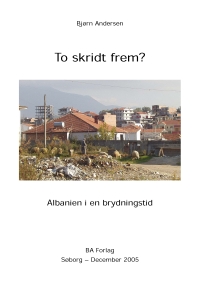Sidste Nyt fra Albanien, Kosóva og Makedonien
The Latest News from Albania, Kosóva and Macedonia
# 304 - 8' årgang - 23.05.2006
Folkeafstemningen i Montenegro • Version 1.1 • # 305 ventes at udkomme 02.06.2006
PDF for printing •
Info om »Sidste Nyt«
Udgiver:
Bjørn Andersen
Publisher:
Bjoern Andersen

Montenegro's våben [klik på billedet for at forstørre det ]
![]()
